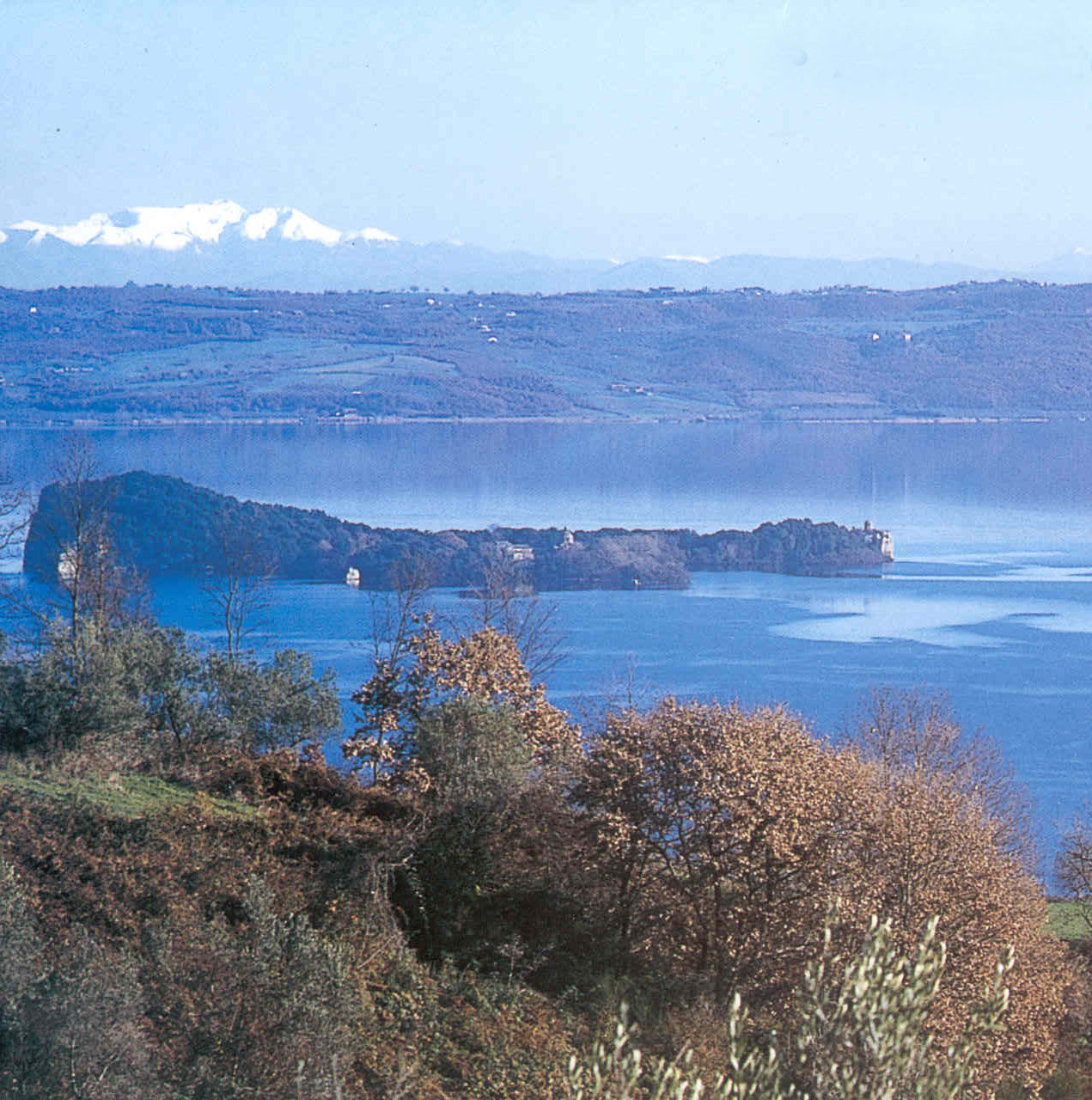| IL
COMPRENSORIO - THE TERRITORY
|
SCEGLI
LA LINGUA
CHOOSE
THE LANGUAGE |



|
|
 |
In
our society, where globalisation is increasing in every
aspect of life, the best achievements can only be attained
by modernity, teamwork and profitable collaboration. This
will also bring to more and better services.
This major objective directly involves tourism being one
of Italy's driving sectors and which can especially be
boosted by local organisations' work. In this respect,
everyone in our area is called on to do their utmost to
meet the increasingly demanding expectations of today's
visitor. The towns of Bagnoregio, Bolsena, Capodimonte,
Gradoli, Grotte di Castro, Marta, Montefiascone, San
Lorenzo Nuovo and Valentano have pooled ideas and
resources to pursue the common objective of making local
tourism thrive. These towns have started out by granting
the Lake Bolsena territory a distinctive "quality
label" to help tourists immediately recognize its
attractions as unmissable landmarks. This is also to
stimulate agencies and local authorities to provide an
integrated number of quality services to ensure visitors
perfect stays. A wider range of things to see will also
cause the tourist influx to be more equally distributed
and better assisted.
|
|
The
Bolsena valley is one of the most beautiful, intact places in
Italy. With its naturalistic assets and cultural heritage, it
perfectly lends itself to such an important promotion plan as
the one the nine towns have unanimously set out to achieve. The
area is steeped in history as custodian of archaeological relics
of such interest and value that the Regione Lazio is planning to
establish here a National Library and an Autonomous Museum
Organization.The beauty of these lands is the result of a
volcanic activity that lasted half a million years. Continuous
lava ejections shaped the landscape, making it so incredibly
unique. About 400 years ago, after a long series of eruptions, a
huge clod of 270 sq km sank a few hundred metres deep into the
earth. This immense chasm, which volcanologists call "the
cauldron", slowly began to expand because of rain and
spring-water erosions. The Lake of Bolsena was formed this way:
120,000 years ago the two enchanting Martana and Bisentina
islands were formed as craters which exploded and then emerged
from the depths of the lake, completing the so-called "Volcanic
Group of Volsini". What remains of the past eruptions is
the numerous thermal springs that dot the district.
Numerous finds of chipped stone tools around Marta's coast,
dating from the Upper Palaeolithic (40,000 to 10,000 years ago),
are proof of original human settlings present in these areas.
The first hamlets, like that of Capriola (in Bolsena municipal
district), were built during the Neolithic and the Aeneolithic
(10,000 to 4,000 years ago) periods. The population of the
territory gradually increased and evolved both in the Bronze and
Iron Ages (2,000 years B.C.), as shown by the numerous remains
of homes found on the Volsini Mountains and in the lake itself
(over 3,000 years the water level had been rising 10 metres and
submerged many home sites).
The main Bronze/Iron Age home sites have been brought to light
in Casale Marcello, Fondaccio (Montefiascone), Capriola, Civita
d'Arlena (Bolsena), Monte Senano, Ragnatoro (Gradoli), Bisenzio,
Civita (Bagnoregio) and on the Bisentina (Capodimonte) and
Martana (Marta) islands. The territory went through a Roman era
since 265 B.C. when Velzna was destroyed and a new town was
founded by the survivors on the northeast rises of the lake
valley. They gave it the same name as the old one, Volsinii, and
christened the lake Volsiniensis. In the Middle Ages the town
was called Borseno and finally Bolsena.
The Mysteries of Santa Cristina in Bolsena (23-24 July), Marta's
Barabbata (14 May), The Purgatory Dinner in Gradoli (Ash
Wednesday), the Parade of Saint Anthony's Horses in Capodimonte
(17 January). These are only some of the important religious
celebrations which have taken place around the lake for
centuries and which signifies a very special blend between
things sacred and profane. These feasts mirror feelings of human
devotion, a taste for simple pleasures, and seem to bring with
them the delicious flavour of the products from the lake and the
surrounding lands.
There are medieval, Renaissance and Baroque traces in all the
towns around the lake, such as fortresses, churches and palaces
evoking clashes of armies, magnificent banquets and the
solemnity of Gregorian choirs.
Thanks to the work of the nine towns this artistic, naturalistic
heritage has been effectively exploited and promoted. There are
no longer sporadic interventions and initiatives, but a general
dedication to reviving what is considered to be everyone's
invaluable |
|
|
 |

